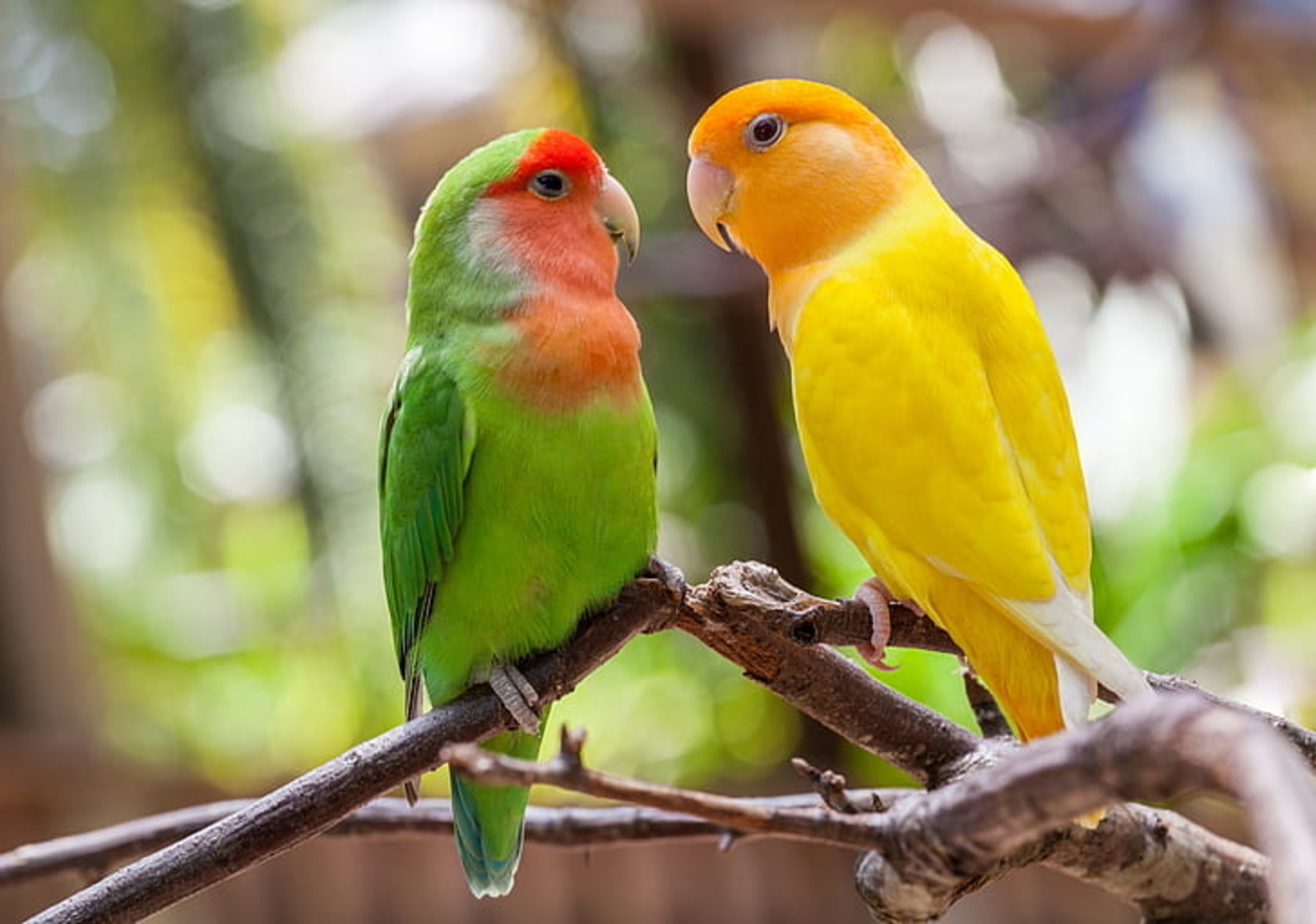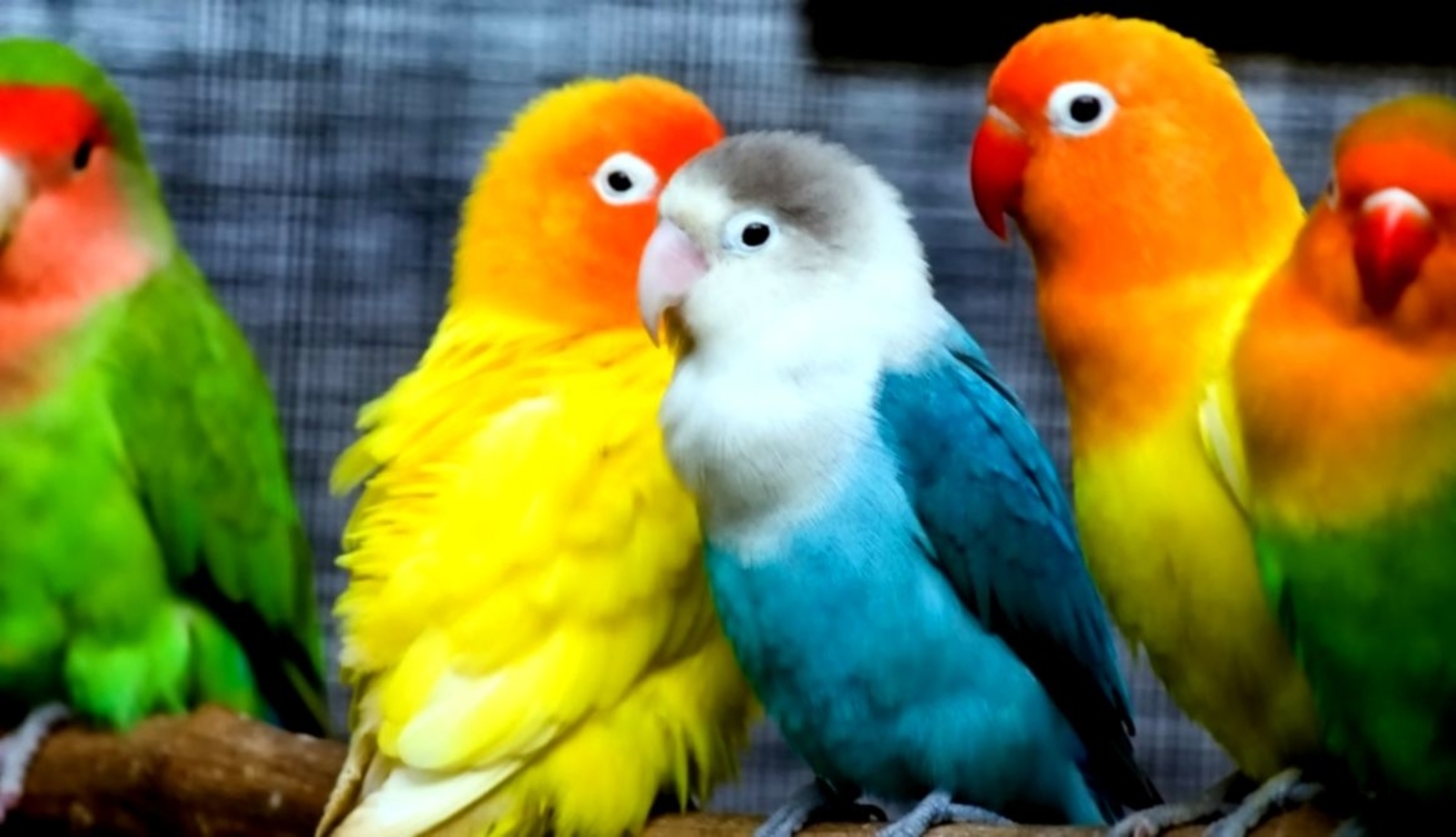LOVEBIRD
Status In The Wild: One species is vulnerable, two are near threatened, the remaining six are of least concern
The lovebird is one of the most brilliantly colored birds there is, and it makes a wonderful pet for the right owner. Social and playful, this is an active parrot species that enjoys plenty of space.
APPEARANCE
The Agapornis fischeri, Agapornis personata, Agapornis roseicollis are small-sized parrots (often called pocket parrots.) Their plumage is exceptionally bright and can include
Blues, greens, yellows, and oranges. Of the nine Agapornis species, only the Absynian, Madagascar, and red-faced have sexually dimorphic characteristics (none of these species are kept regularly in captivity.)
The Fischer’s, black-masked, and peach-faced species are the most commonly kept in captivity. The Fischer’s and black-masked species measure between 5 and 6-inches long and weigh around 1.7-ounces. The peach-faced species is slightly larger at around 7-inches long and weighs 1.9-ounces.
VOCALIZATIONS
Not as large as – and therefore not as loud as – larger parrot species, the Agapornis is still a vocal bird that regularly chatter. If a bird needs attention, it will also screech. Agapornis is not a parrot species that is known for talking or for mimicry.
LIFESPAN
The wild Agapornis has a short lifespan of approximately 5-years. Captive birds ten to live much longer and have a lifespan of 15 to 20-years.
LIFE AS A PET
The captive Agapornis is a little more challenging as a pet, but a dedicated first-time bird owner can handle this small parrot.
Like other parrot species, this is an active bird that thrives on regular interaction and stimulation. Bored or stressed birds can become destructive and even pluck out their feathers.
PAIRING
Agapornis species are monogamous and pick one partner for life, but they also thrive as single birds and can be quite picky about companions.


